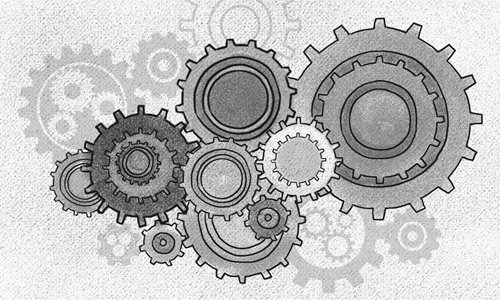HOME >> BUSINESS
New China-Japan cooperation models build tech strength
By Feng Zhaokui Source:Global Times Published: 2019/7/28 17:34:32
China-Japan cooperation models build tech strength

Illustration: Xia Qing/GT
The escalating trade row between Japan and South Korea seems unlikely to be resolved in the short term. Although China is not involved in their dispute, there is still something worthy of attention as regards aspects like semiconductor material development and high-tech industrial competition.
Since the 1990s, the South Korean semiconductor industry has built a significant market in the global semiconductor industry. In particular in 2017 Samsung overtook Intel to become the world's largest semiconductor company and the latter had previously ranked first for 25 consecutive years.
South Korea's DRAM memory accounted for about 70 percent of the global market, with its NAND flash memory accounting for about 50 percent. The rapid development of South Korean semiconductor companies inevitably pointed to a rapid increase in demand for components and raw materials for the semiconductor production. South Korea's component and raw material sectors are far from meeting the development need of the domestic semiconductor industry in terms of type, quality and technical level. Thus South Korea has long relied on imports of Japanese components, raw materials and technology, and this reliance is difficult to abandon in the short term. For example, South Korea buys 91.9 percent of its photoresists and 93.7 percent of its polyamides from Japan.
Japan was a leading producer of consumer electronics such as computers and video recorders for a long time. The often-overlooked fact is that Japan was also the biggest supplier of intermediate products including many key components and raw materials. Among Japan's exports of industrial products, the proportion of durable consumer goods is less than 20 percent, while that of production materials is as high as 80 percent.
In June, a Japanese media report found that of 1,631 parts in the Huawei P30 Pro smartphone, 859 were from Japan, or 53 percent.
Japan's strength in component technology lies in companies committed to developing and manufacturing products that other countries cannot produce. Smaller companies specialize in a certain technology for decades or even generations. Statistics show that as of 2015, there were 21,666 companies that had been operating in Japan for more than 150 years. By comparison, China had less than 100.
As South Korean companies have been cut off from supplies of Japanese semiconductor materials, many Chinese people are concerned about whether China might one day face a similar situation. In my opinion, in the era of globalization, while we Chinese are trying to improve our own technology, we should not shun cooperation. Two new models for Sino-Japanese technological cooperation have emerged: Japan's new technology plus China's new market and China's capital plus Japan's smaller companies.
For the first model Japan's hydrogen energy vehicles and chip technology could combine with China's fast growing new-energy car market. For instance, the Mirai hydrogen fuel cell vehicle manufactured by Toyota can travel 500 kilometers on a tank of hydrogen, with the fuelling process taking three minutes. Due to the high costs of research and development in its early stage, the car is priced relatively high, at about 460,000 yuan ($66,880). If China and Japan can cooperate to promote the practical development of hydrogen fuel cell vehicles, the rapid expansion of China's new-energy car market would probably drive down the price of hydrogen fuel cell cars, making it a new type of transport for the public by 2025. Most of the electric cars in China are using lead-acid batteries, creating worries as waste batteries lead to serious environmental pollution, violating the original intention of green vehicles. In this sense, it is necessary to accelerate the development of hydrogen fuel cell vehicles for the protection of the environment.
The second model is a new approach to scientific and technological cooperation between China and Japan. Japan has experienced small manufacturers with long-term, specific skills and technologies. With an aging population, such companies face the future with the worry of a lack of successors or sluggish sales. Chinese capital has recently started to flow into some Japanese companies with operating difficulties or even facing bankruptcy, helping them establish sales channels in Asia and thus regaining vitality.
China and Japan have cooperated for decades in science and technology. We should make good use of this experience, learn lessons and build on networks to further that cooperation.
The author is an honorary member of the Chinese Academy of Social Sciences. bizopinion@globaltimes.com.cn
Newspaper headline: China-Japan cooperation models build tech strength
Posted in: INSIDER'S EYE